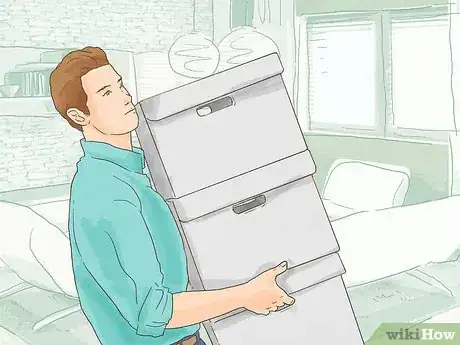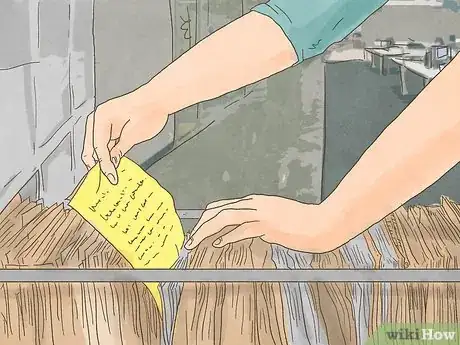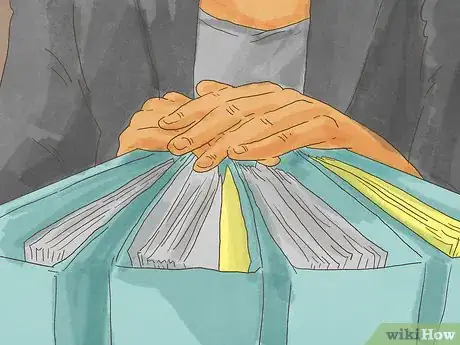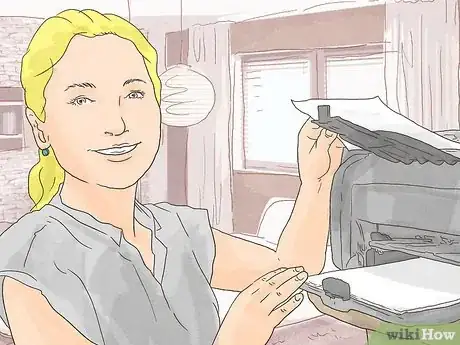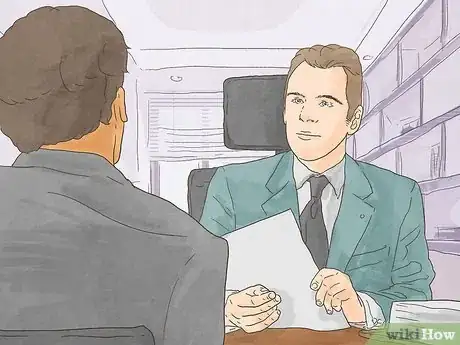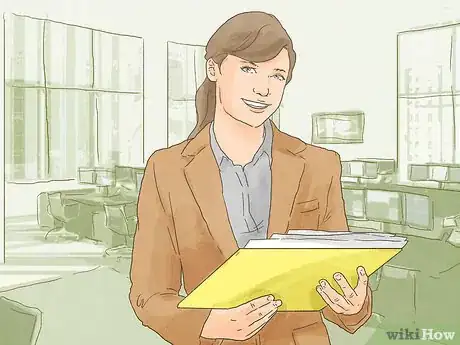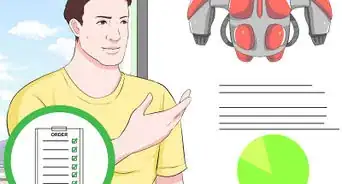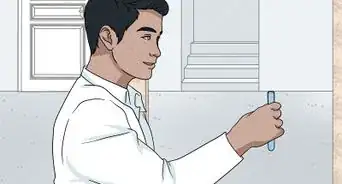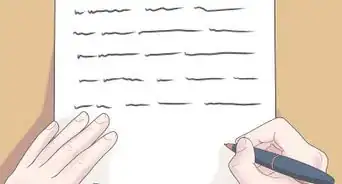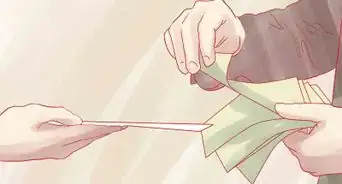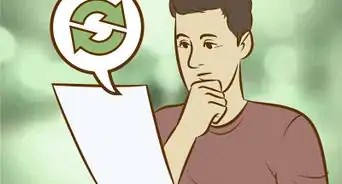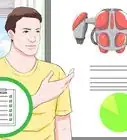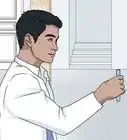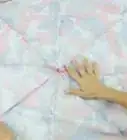This article was written by Jeremy Rutman, PhD and by wikiHow staff writer, Jennifer Mueller, JD. Dr. Jeremy Rutman is a Patent Attorney and the CEO and Founder of RutmanIP, a boutique intellectual property firm in Israel. With over 15 years of experience, Dr. Rutman specializes in drafting patent applications in various fields such as physics, computer hardware and software, electrical engineering, mechanical engineering, green energy, and software. He holds a BS degree in Physics from Harvard University, where he graduated cum laude, and an MS and Ph.D. in Physics from the Technion - Israel Institute of Technology. Dr. Rutman has extensive experience turning start-up ideas into strategic assets and has published his work in many leading professional journals in the field.
This article has been viewed 21,238 times.
If you have a good idea, document your invention from the beginning as you complete your planning, building, and testing. In many ways, a patent is only as good as your documentation, and if it's challenged or infringed, good documentation can go a long way to protecting your interests. As an inventor, you're also potentially an entrepreneur, so documentation also includes maintaining receipts and correspondence related to your invention and its development.[1]
Steps
Recording Your Progress
-
1Buy a bound notebook. Despite technological advances, the best way to document your invention remains hand-writing details regarding your idea, descriptions, and tests on paper in a bound notebook.[2] [3]
- Look for something with a hard cover, and pages that are sewn in. This makes it more difficult for a later challenger to argue that you added something after the fact.
- Some of these books have blank pages, while others include lines or grids. Choose the type of paper that best suits your needs. If you anticipate drawing a lot of diagrams, you may want grid lines so you can measure more easily and keep your sketches neat.
- You typically can find these blank books in an office supply store. Save your receipt when you buy it, because you'll want to keep it in your files of other documents related to your invention. The receipt also provides additional proof of the date.
-
2Set up your notebook. Number your notebook on the outside front cover along with the date you started it. If it's the first notebook documenting your invention, it should be "#1." Then include basic ownership information on the inside of the front cover.[4]
- Your notations on the outside of your notebook are mostly for your own benefit, so include anything that might help you.
- For example, if you're working on more than one invention, you may want to include a notation or code name for the invention that corresponds to that particular notebook, so you don't inadvertently get them mixed up.
- On the inside cover, write your name and contact information. You might also include a brief description of the contents of the notebook, including a name for the invention.
Advertisement -
3Choose witnesses. Each of the pages in your notebook should be signed and dated by at least two witnesses who can verify that you entered the information on the date specified at the top of the page.[5]
- While you may think it would be helpful to use a notary, there are many reasons having your pages notarized is insufficient – not to mention that notary fees could add up pretty quickly.
- The main reason not to use a notary is that the notary won't necessarily understand the information on the page. The only purpose for a notary is to verify that you are the person you claim to be, and check your ID. He or she isn't necessarily a strong witness in terms of being able to read and understand the content of the pages.
- Choose witnesses who are in a similar industry and can be counted on to understand your entries, but don't use anybody who is working with you or has an ownership stake in your invention.
- While one witness is sufficient, two is better. Judges are more likely to trust information that was verified and attested to by two independent witnesses.
- You may want to draft and have your witnesses sign a confidentiality agreement before you let them see your notebook.
-
4Write your entries. Your notebook will include information regarding the purpose, description, ramifications, and advantages of your invention. You also will include entries regarding any testing you did of the invention or prototypes you assembled.[6]
- Each page should be dated with the date you wrote the information. If an entry takes more than one page, continue to the next page and put the date at the top.
- Leave space at the bottom of each page for your signature and the signatures of your witnesses.
- You should sign and date the bottom of each page, as should your two witnesses. To the extent possible, try to have your witnesses sign the pages on the same day you create the entry and sign it yourself, so all the dates match.
- When writing your entries, don't worry too much about sloppiness or poor penmanship. This only matters to the extent that your entries should be legible.
Organizing Related Materials
-
1Buy a filing box or set of folders. Ideally, you should organize other documents related to your invention, including receipts for parts and correspondence with others, in a set of folders that are closed on all sides so nothing can slip out and get lost.[7]
- You can find a number of products at an office supply store that will work, and choose the one that best meets your needs. You may want to buy your filing materials at the same time you buy your notebook.
- Take a little time before you choose your filing materials to figure out how many different folders you'll need for the various documents associated with your invention.
- You also want to be able to project how much space you'll need. For example, if you anticipate having to make multiple purchases of materials to build prototypes of your invention, you may need more than one folder to organize the receipts.
-
2Label a folder for each type of document. Since different types of documents must be kept for different reasons, they should be organized separately so that you can easily find them when necessary. The different folders you have will depend on what's involved in the development of your invention.[8]
- You typically will need a separate folder for purchase receipts, correspondences, other deductions, and contracts.
- You may want several folders for correspondences that are related to different aspects of your invention, such as one folder for correspondence with your patent attorney and another for correspondence with financiers or developers.
- Keep in mind that there's no set organization method for your documents. Rather, you should organize them in a way that makes sense to you and ensures you can quickly and easily locate the documents you need.
- However, make sure everything within each folder is in chronological order. Reverse chronological order (in which the newest documents are at the front of the folder) may make filing easier, but make sure you use the same method in each folder.
-
3Gather documents to file. Once you have your filing system set up, pull together all the documents and copies related to your invention and sort them into piles. Then arrange each pile in chronological order.[9]
- If you end up with a pile of documents for which you didn't make a folder, you may need to create a new folder.
- The size of your piles also can give you an idea of which categories are good candidates to be further sub-divided for ease of use.
- Although you should always keep the originals, making a copy of receipts and filing the copy can keep your files more organized and reduce the possibility of a small slip of paper falling out and getting lost.
- Another benefit of making a photocopy of receipts is that you can write any relevant information on the paper, such as the date (if not present on the receipt) or the purpose of the materials purchased (if not clear from the receipt itself).
- Make sure you write the date on any document that isn't dated. If you have any other documents or information that you can use to verify that date, attach them to the undated documents.
-
4Maintain your filing system. Any new documents related to your invention should be recorded and filed in the appropriate folder immediately. Only doing filing periodically, such as weekly or monthly, can result in something important being inadvertently left out.[10]
- Keep in mind that these documents potentially are being filed and kept for several reasons. One is to provide a record of your invention and the steps you've taken to develop it, but taxes provide another important reason.
- Particularly in the case of receipts or professional fees, such as money you pay to your attorney, these expenses may be tax deductible.
Filing a Provisional Patent Application
-
1Download a provisional application. When you're ready to disclose your invention to others, whether to obtain financing or arrange for manufacturing and distribution, a provisional application provides you with patent protection for 12 months while you prepare your full patent application.[11]
- You can download a provisional application from the website of the U.S. Patent and Trademark Office (USPTO). The website also has detailed instructions FAQs, and other guidance and resources for inventors who want to apply for a patent.
- While you're on the USPTO website, check the eligibility requirements and make sure your invention is eligible for patent protection. Generally, your invention must be unique, non-obvious, and tied to a machine in some way.
- For example, if you've invented a mobile app, you can get patent protection for the process of the app – what it does to the computer or makes the computer do – but you can't patent the code itself. Code is considered a language and is therefore protected by copyright.
-
2Consult a patent attorney. Although you don't necessary need an attorney to complete a provisional application, once you file your provisional application you only have 12 months to complete your full application and take advantage of the earlier filing date.[12]
- Before you begin filing your applications, you must conduct a patent search to make sure no one else has patented an identical or similar invention.[13] This search can be complex and time-consuming, and the USPTO recommends you hire a patent attorney to assist you if you've never done one before.
- Additionally, you will need an attorney to assist you in filing your full patent application. A full application is exceedingly complex and has many relatively arcane and technical requirements. Without an attorney, you run a very high risk of having your application rejected.
- Since you typically need an attorney to file your full patent, it makes sense to have an attorney help you with your provisional application so they have a knowledge and understanding of your invention from the outset. They also can ensure you don't inadvertently put something on your provisional application that might conflict with information in your full application.
- Search for an experienced patent attorney who has experience in your industry. You want an attorney who understands your invention and its potential applications.
-
3Complete your provisional application. A provisional application is simpler and less expensive than a full application, and gives you the benefit of patent protection along with the ability to use an earlier filing date once your full patent is granted.[14] [15]
- Your provisional application must include a written description of your invention along with the names of all the inventors. It also must be accompanied by a cover sheet and the appropriate filing fee.
- The cover sheet lists the names and addresses of all inventors, the title of the invention, the name and registration number of any attorney or agent who worked with you to prepare your application, and the address the USPTO should use for correspondence with you.
-
4Submit your provisional application. Once you've completed your provisional application, you can file it with the USPTO using the electronic filing system located on their website. You also have the option of sending a hard copy through the mail.[16]
- File your provisional application any time within 12 months of your first public disclosure of your invention. For example, if your invention is profiled in a trade magazine in January, you have until the end of the same year to file a provisional application.
- If you want to submit your application through the mail, send a hard copy of the application and cover sheet along with the required filing fee to Commissioner for Patents, P.O. Box 1450, Alexandria, VA 22313-1450.
- Once you've filed your provisional application, you have the right to use the words "patent pending" in relation to your invention for 12 months. This gives you time to complete your full application.
Expert Q&A
Did you know you can get expert answers for this article?
Unlock expert answers by supporting wikiHow
-
QuestionWhat do I need to fill out after my provisional patent expires?
 Jeremy Rutman, PhDDr. Jeremy Rutman is a Patent Attorney and the CEO and Founder of RutmanIP, a boutique intellectual property firm in Israel. With over 15 years of experience, Dr. Rutman specializes in drafting patent applications in various fields such as physics, computer hardware and software, electrical engineering, mechanical engineering, green energy, and software. He holds a BS degree in Physics from Harvard University, where he graduated cum laude, and an MS and Ph.D. in Physics from the Technion - Israel Institute of Technology. Dr. Rutman has extensive experience turning start-up ideas into strategic assets and has published his work in many leading professional journals in the field.
Jeremy Rutman, PhDDr. Jeremy Rutman is a Patent Attorney and the CEO and Founder of RutmanIP, a boutique intellectual property firm in Israel. With over 15 years of experience, Dr. Rutman specializes in drafting patent applications in various fields such as physics, computer hardware and software, electrical engineering, mechanical engineering, green energy, and software. He holds a BS degree in Physics from Harvard University, where he graduated cum laude, and an MS and Ph.D. in Physics from the Technion - Israel Institute of Technology. Dr. Rutman has extensive experience turning start-up ideas into strategic assets and has published his work in many leading professional journals in the field.
Patent Attorney
Warnings
- You may have heard that putting information about your invention in a sealed envelope and mailing it to yourself can prove when you came up with the idea. This is a myth. Because it can be easily falsified and the documents cannot be independently verified by anyone else, courts give it next to no evidentiary value.[17]⧼thumbs_response⧽
References
- ↑ http://smallbusiness.findlaw.com/intellectual-property/document-your-invention-why-and-how.html
- ↑ http://smallbusiness.findlaw.com/intellectual-property/document-your-invention-why-and-how.html
- ↑ http://www.madaypatentlaw.com/downloads/Documenting%20Your%20Invention.pdf
- ↑ http://www.madaypatentlaw.com/downloads/Documenting%20Your%20Invention.pdf
- ↑ http://www.madaypatentlaw.com/downloads/Documenting%20Your%20Invention.pdf
- ↑ http://smallbusiness.findlaw.com/intellectual-property/document-your-invention-why-and-how.html
- ↑ http://smallbusiness.findlaw.com/intellectual-property/document-your-invention-why-and-how.html
- ↑ http://smallbusiness.findlaw.com/intellectual-property/document-your-invention-why-and-how.html
- ↑ http://smallbusiness.findlaw.com/intellectual-property/document-your-invention-why-and-how.html
- ↑ http://smallbusiness.findlaw.com/intellectual-property/document-your-invention-why-and-how.html
- ↑ Jeremy Rutman, PhD. Patent Attorney. Expert Interview. 5 January 2021.
- ↑ http://www.uspto.gov/patents-getting-started/general-information-concerning-patents
- ↑ Jeremy Rutman, PhD. Patent Attorney. Expert Interview. 5 January 2021.
- ↑ http://www.nolo.com/legal-encyclopedia/provisional-patent-applications-29856.html
- ↑ http://www.uspto.gov/patents-getting-started/patent-basics/types-patent-applications/provisional-application-patent
- ↑ http://www.uspto.gov/patents-getting-started/patent-basics/types-patent-applications/provisional-application-patent
- ↑ http://www.madaypatentlaw.com/downloads/Documenting%20Your%20Invention.pdf




